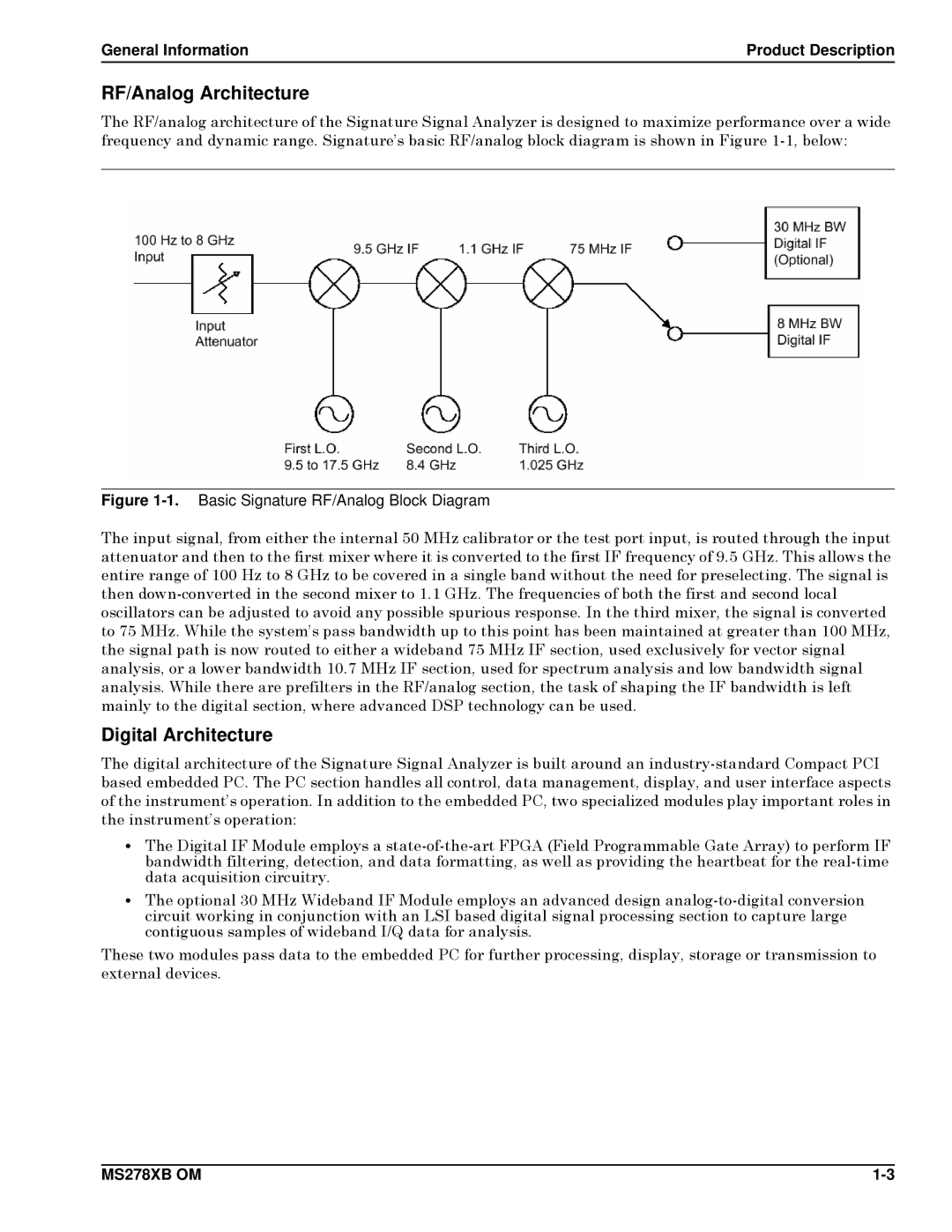
General Information | Product Description |
RF/Analog Architecture
The RF/analog architecture of the Signature Signal Analyzer is designed to maximize performance over a wide frequency and dynamic range. Signature’s basic RF/analog block diagram is shown in Figure
Figure 1-1. Basic Signature RF/Analog Block Diagram
The input signal, from either the internal 50 MHz calibrator or the test port input, is routed through the input attenuator and then to the first mixer where it is converted to the first IF frequency of 9.5 GHz. This allows the entire range of 100 Hz to 8 GHz to be covered in a single band without the need for preselecting. The signal is then
Digital Architecture
The digital architecture of the Signature Signal Analyzer is built around an
•The Digital IF Module employs a
•The optional 30 MHz Wideband IF Module employs an advanced design
These two modules pass data to the embedded PC for further processing, display, storage or transmission to external devices.
MS278XB OM |
